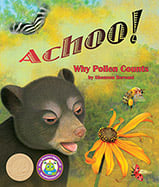Alignment to Standards for MD

| Grade | Number | Standard |
|---|---|---|
| 1 | SC-1.3.0.B.2.c | Describe some parts of plants and describe what they do for the plant. |
| 1 | SC-1.3.0.C.2. | Recognize that all living things have offspring, usually with two parents involved. |
| 1 | SC-1.3.0.E.1. | Describe some of the ways in which animals depend on plants and on each other. |
| 2 | SC-2.3.0.C.1. | Explain that there are identifiable stages in the life cycles (growth, reproduction, and death) of plants and animals. |
| 2 | SC-2.3.0.C.1.a | Investigate and describe that seeds change and grow into plants. |
| 2 | SC-2.3.0.C.1.c | Given pictures of stages in the life cycle of a plant or an animal, determine the sequence of the stages in the life cycle. |
| 2 | SC-2.3.0.C.1.d | Provide examples, using observations and information from readings that life cycles differ from species to species. |
| 2 | SC-2.3.0.F.1.b | Explain that organisms live in habitats that provide their basic needs: Food, Water, Air, Shelter |
| 3 | SC-3.2.0.E.1.a | Describe that air is a substance that surrounds us and contains such things as oxygen, water vapor (gas), pollen, dust, etc. |
| 4 | SC-4.3.0.F.1.a | Explain ways that individuals and groups of organisms interact with each other and their environment. |
| 4 | SC-4.3.0.F.1c | Identify and describe the interactions of organisms present in a habitat: Beneficial interactions: nesting, pollination, seed dispersal, oysters filtering as in the Chesapeake Bay, etc. |
| 5 | SC-5.3.0.E.1. | Recognize that some source of energy is needed for all organisms to grow and survive. |
| 5 | SC-5.3.0.E.1.d | some insects and various other organisms depend on dead plant and animal material for food. |
| K | SC-K.3.0.C.1. | Observe, describe and compare the life cycles of different kinds of animals and plants. |
| K | SC-K.3.0.C.1.a | Identify and draw pictures that show what an animal (egg to frog) and a plant (seed to tree) looks like at each stage of its life cycle. |
| K | SC-K.3.0.E.1.a | Make observations of the features and behaviors of many different kinds of animals within an environment to identify and begin building a list of some of the basic needs these organisms share, such as water, air, etc. |
| K | SC-K.3.0.E.1.c | Make observations of the features of many different kinds of plants within an environment to identify and begin building a list of some of the basic needs these organisms share, such as water, light, etc. |
| K | SC-K.3.0.E.1.d | Describe the way that most plants manage to bring water from the environment into the plant. |
| K | SC-K.3.0.F.1.c | Describe ways that animals and plants found in each place interact with each other and with their environment. |